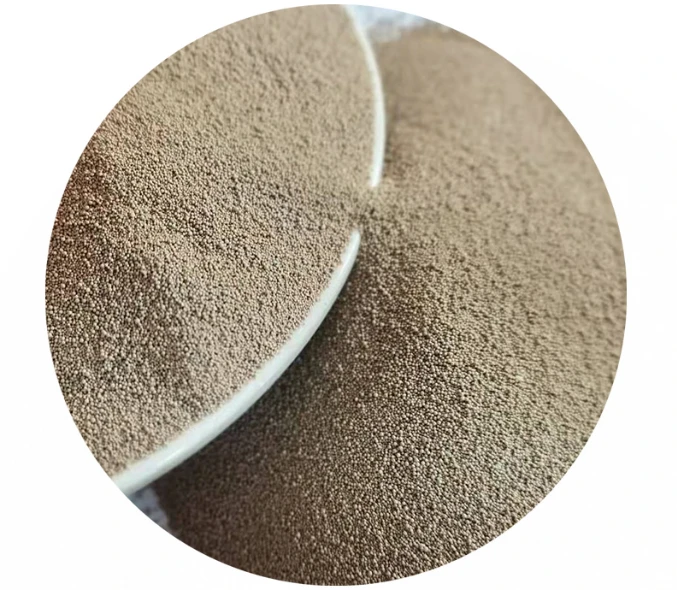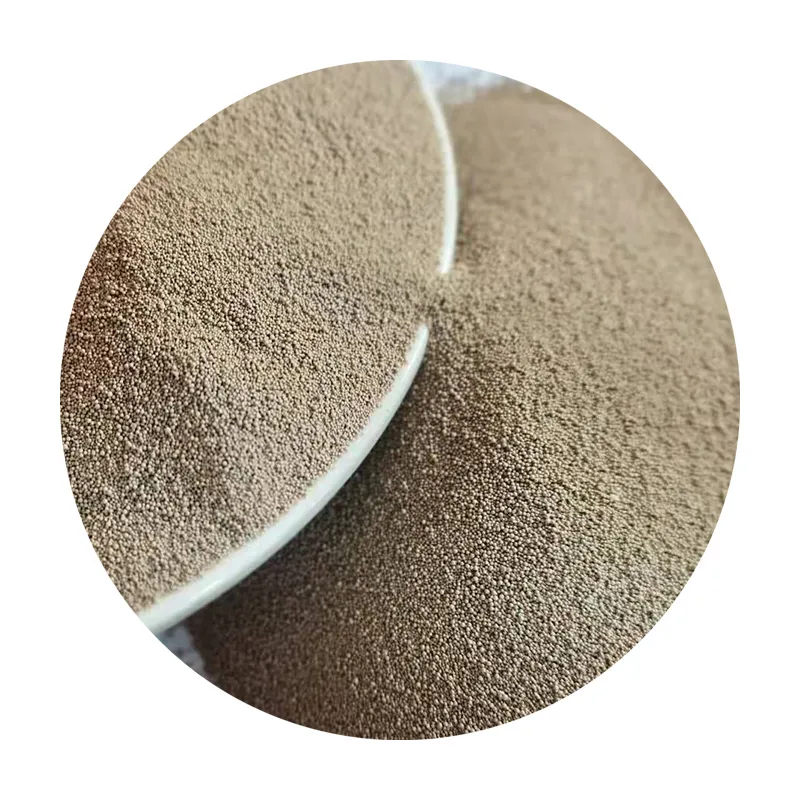- Factors influencing sand casting cost breakdown
- Technological improvements and 3D printing impact
- Material cost analysis: Foundry sand price variations
- Manufacturer comparison tables for casting solutions
- Custom production scenario pricing models
- Industry application cost case studies
- Optimizing sand casting project budgeting strategies

(sand casting price)
Understanding Sand Casting Price Variables
Sand casting expenses fluctuate based on core factors including pattern complexity, production volume, and material specifications. Traditional green sand casting typically costs between $0.05-$1.00 per cubic inch, while chemically bonded sand systems increase pricing by 40-60%. Labor constitutes 30-50% of total expenses in low-volume batches, dropping below 20% for automated high-volume production.
Production scale significantly alters per-unit pricing - components costing $150/unit in 100-piece orders drop below $35/unit for 10,000-unit batches. Global manufacturing regions show substantial cost variations: North American foundries charge $25-50/hour for machine time, while Asian suppliers offer services at $12-30/hour for comparable equipment. Secondary processing (heat treatment, surface finishing) adds 15-75% to base casting prices depending on specifications.
3D Printed Sand Molding Cost Innovations
Additive manufacturing has reduced pattern-making expenses by 60-80% compared to traditional methods, enabling complex geometries previously impossible with wooden patterns. Industrial 3D sand printers like the ExOne S-Max Pro require $500,000-$1.2M capital investment but eliminate tooling costs that typically reach $5,000-$75,000 for conventional molds.
Binder jetting technology reduces lead times from 6-8 weeks to 48-72 hours for prototype molds. While printer sand costs $0.80-$1.25/lb compared to $0.15-$0.40/lb for conventional foundry sand, the elimination of pattern storage and maintenance offsets this premium. For bridge production quantities of 50-500 units, 3D printed molds demonstrate 40-65% cost advantages over traditional methods according to recent aerospace case studies.
Casting Sand Material Cost Analysis
Foundry sand represents 7-15% of total project costs with significant regional variations:
Silica Sand Pricing: Premium AFS 55-65 grade averages $25-45/ton domestically, while specialized chromite sands reach $350-600/ton. High-purity ceramics like zircon sand command $800-1,200/ton for premium grade. Recycling systems reclaim 85-95% of sand, reducing consumption by 60% compared to traditional workflows.
Binder Systems: Traditional green sand clay binders cost $0.08-0.20/lb, while modern sodium silicate and phenolic urethane systems range between $1.20-3.50/lb. Newer environmentally-conscious binders reduce VOC emissions but add 15-30% to material costs. Thermal sand reclamation units ($80,000-$220,000 investment) typically achieve ROI within 18 months for medium-volume foundries.
Manufacturing Technology Comparison
| Manufacturing Method | Equipment Cost | Lead Time | Volume Breakeven | Per-Part Cost Factor |
|---|---|---|---|---|
| Traditional Sand Casting | $250K-$1.5M | 6-12 weeks | 1K+ units | Material/Labor Intensive |
| 3D Printed Molds | $500K-$1.4M | 2-3 weeks | 50-500 units | Machine Time/Materials |
| Hybrid Automated Systems | $1.8M-$4M+ | 3-4 weeks | 5K+ units | Equipment Depreciation |
Vendors like HA International dominate the binder market with 38% global share, while Voxeljet and ExOne lead industrial sand printer sales. Traditional equipment manufacturers Disa and Hunter Engineering maintain 60% market penetration in automated molding lines priced between $200,000-$1.2M. Maintenance costs average 3-8% of equipment value annually across technologies.
Custom Casting Solution Economics
Specialized application requirements introduce cost variables that impact pricing:
Surface Finish Requirements: Standard as-cast finish requires minimal processing, while 125-250 Ra specifications increase costs by 25-40%. Critical tolerance zones below ±0.005" demand premium pattern equipment and add 35-80% to machining expenses.
Prototyping vs Production: Development-phase castings range from $800-$5,000 per part depending on size. Short-run projects (50-200 units) average $120-$350/unit for medium complexity designs, dropping below $65/unit for quantities exceeding 1,000 pieces with standardized components.
Aluminum casting projects typically cost 20-40% less than equivalent ferrous components due to reduced melting energy and machining requirements. Tight-margin components require CAD optimization to minimize machining stock allowances, reducing raw material consumption by 15-25%.
Industry Cost Implementation Cases
Automotive implementation: Brake caliper production achieved 23% cost reduction using automated molding lines, lowering per-unit expenses from $85 to $65 at 75,000-unit volumes through optimized sand reclamation and energy-efficient melting.
Pump manufacturing case: Combining 3D printed cores with traditional green sand molding decreased development costs by 60% for hydraulic components. Production expenses settled at $28/unit for 2,000-unit batches, compared to $41/unit using conventional approaches.
Wind energy application: 17-ton ductile iron hubs required $54,000-$68,000 per unit for traditional production. Implementing high-pressure molding systems and regional chromite sand sourcing optimized costs to $47,500 per casting without compromising NDT requirements.
Optimizing Sand Casting Investment Returns
Strategic sourcing reduces sand casting expenses through regional partnerships and digital inventory management. Centralizing North American production using Great Lakes region foundries decreases logistics costs 15-30% compared to coastal facilities. Multi-year supply agreements secure favorable foundry sand pricing at 12-18% below spot market rates.
Digital pattern repositories save $8,000-$20,000 annually in storage costs for low-run production components. Implementing automated sand testing labs ($30,000-75,000 investment) reduces material consumption 8-12% by optimizing binder ratios. Maintenance scheduling software cuts equipment downtime 40%, maximizing utilization of molding assets valued at $1-4M per production line.
Bulk purchasing consortiums secure silica sand below market prices, with groups achieving $18-24/ton contract pricing versus $28-42/ton spot costs. Secondary process standardization and shipping optimization further reduce overall expenses, with comprehensive value engineering initiatives documenting 18-35% project cost reductions.

(sand casting price)
FAQS on sand casting price
Q: What factors influence the cost of sand casting?
A: The price depends on part complexity, mold size, alloy type, order quantity, and finishing requirements. Higher volumes reduce unit costs, while intricate geometries or exotic alloys increase quotes. Post-processing like machining or coating adds expenses.
Q: How much does casting sand cost per ton?
A: Standard foundry sand ranges from $50-$150/ton, depending on purity, grain size, and binder additives. Specialty sands like chromite or zircon can exceed $500/ton. Bulk purchases typically lower costs by 10-20%.
Q: What is the typical price range for small-batch sand casting?
A: Prototype orders (1-10 pieces) average $150-$500 per part for aluminum/iron casts under 5kg. Costs decrease significantly at 50+ units due to optimized mold production. Material choice (e.g., steel vs brass) heavily impacts pricing.
Q: How expensive are industrial 3D sand printers?
A: Production-grade binder jetting systems cost $250,000-$1M+, varying by build volume and automation. Desktop models start around $50,000. Operational expenses include resin binders ($100-$200/kg) and maintenance contracts.
Q: Can tooling reductions lower sand casting prices?
A: Yes, using 3D printed sand molds eliminates traditional pattern costs ($3k-$15k), ideal for prototypes. Design standardization also reduces expenses – simpler geometries and draft angles accelerate production, cutting labor fees by up to 40%.
Next:Key Types of Foundry Sand for Superior Casting Quality
